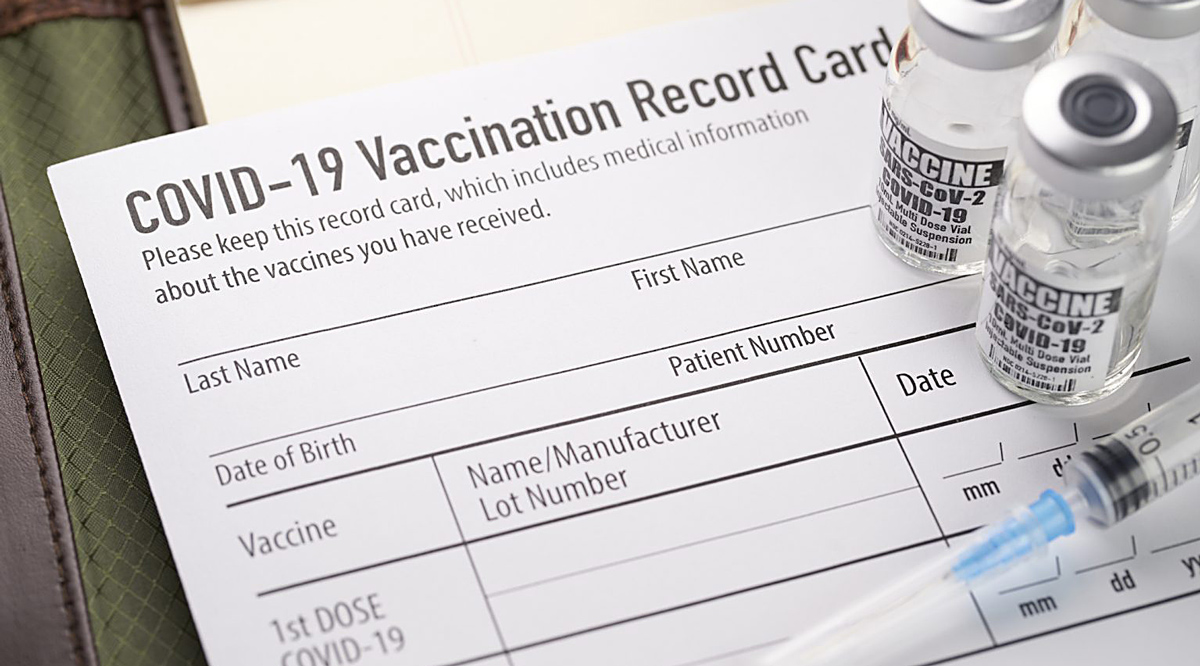Pop-up vaccination clinics may be a good option for personnel who’ve been on the fence about the vaccines. We share tips from Vidant Health and Upstate Medical University.

Every year at the start of flu season, Vidant Health in Greenville, North Carolina, sends out mobile units to make it as easy as possible for its 13,000 employees to get their annual flu shots.
If the carts work for flu vaccines, why not COVID-19 shots?
That’s what Bobbie Vaughn and her team at Vidant Health decided in March. Even though the company had been inoculating employees by the thousands as soon as the first doses became available late last year, the carts have made it easier for vaccinators to reach people across a medical system that spans nine hospitals in a 29-county region in eastern North Carolina.
“We wanted to do whatever we could do to meet people where they were and to get them vaccinated,” says Vaughn, Vidant’s administrator of corporate health services.
Over 10 days in March, Vidant vaccinated 1,700 people and could have handled more, but was limited by the supply of the one-shot Johnson & Johnson vaccine, Vaughn says. Now that vaccine supply has caught up with demand, Vidant plans to resume use of the mobile carts.
A number of academic medical centers have found that mobile vaccination carts are a good complement to stationary vaccination sites. Carts are easy to mobilize, don’t have to be on a schedule, and can accommodate health care professionals’ busy schedules. They can transport any of the three vaccines authorized for use in the United States, and a pop-up vaccination site is a good option for some people who’ve been on the fence about the vaccines. You can snag people who wouldn’t make an appointment, and you can have hospital leaders on hand to answer staff members’ questions and ease concerns.

“Mobile vaccine carts allow us to be flexible and nimble so we can reach people over time and follow up with them if at first they were hesitant,” Vaughn says.
If you’re considering using carts to vaccinate your health care personnel, here are some things to consider:
Do’s and Don’ts
Do answer questions and educate staff members. In Syracuse, New York, the Upstate Medical University employed a mobile cart as a way to connect with staff and answer questions. After the first batch of mRNA vaccines were approved in late December, a vaccine team walked the halls of Upstate University Hospital with a mobile COVID-19 vaccination clinic on a Saturday over the course of two shifts, giving front-line workers easy access to their first doses. The vaccination team was joined by Upstate Medical University President Mantosh Dewan, MD, and Upstate University Hospital CEO Robert Corona, DO, MBA, who answered questions from staff about the Pfizer and Moderna vaccines.
Corona says the outreach was important both “to show that the vaccine is safe and that we were willing to put in the time on a weekend, like many of our people have done, to get as many people vaccinated as possible.”
They succeeded at changing minds and building trust. “Most people who changed their minds required 20 to 30 minutes of conversation, which included education and reassurance,” Corona says. “We were thanked and have continued communication with many we connected with while working.”
Vidant Health also engaged in extensive educational outreach with staff, holding panel discussions and ongoing talks with subject experts, and giving employees a way to ask questions online. The goal, Vaughn says, is to give employees accurate information to make educated decisions while also making the process as convenient as possible.
Do staff the carts appropriately. At Vidant Health, each vaccination cart is staffed with a nurse to administer vaccines and an assistant to handle electronic records. “We use all of our mobile technology,” Vaughn says. “It’s pretty incredible that we can get all of our signatures electronically.”
Do give people a heads up. Vaughn suggests publishing a schedule. “I heard people saying, ‘I wish I would have known you were going to be in the administration offices because I would have stopped by,’” Vaughn says. In addition, Vidant managers can call Vaughn to schedule 90-minute visits to their departments to vaccinate as many staff members as are interested.
Don’t ignore the power of spontaneity. Vidant’s vaccination teams can also be spontaneous, meandering the corridors and ducking into departments to find volunteers. “We have a very big footprint,” Vaughn says, “and we can’t get to all the places if we only have scheduled time slots.”
Don’t hide in an office, conference room, or less-traveled hallway. Park the cart in front of the nurse’s station if necessary. “Out of sight, out of mind,” Vaughn says. “If we’re in a room, I have to send staff out to get people.”
That happened the first time around when a cart was sent to Vidant Medical Center’s emergency department and placed out of the way in a hallway. Only five people showed up. The emergency staff was so preoccupied that even seeking out the vaccinators was asking a lot.
“We heard from some who said, ‘I was trying to get there, but I couldn’t break away,’” Vaughn says. “It’s such a delicate situation. Their patients are their No. 1 priority and we certainly don’t want to get in the way of that.” The next time around, she says they will set up in a more visible location.
Do measure success along the way. As of late April, Vidant Health had vaccinated 54% of its workforce. Vaughn measures progress one arm at a time. “This is a marathon, not a sprint,” she says. “Anyone who I reach via a vaccination cart is a success because there was some reason why that person was reluctant to do this earlier.”